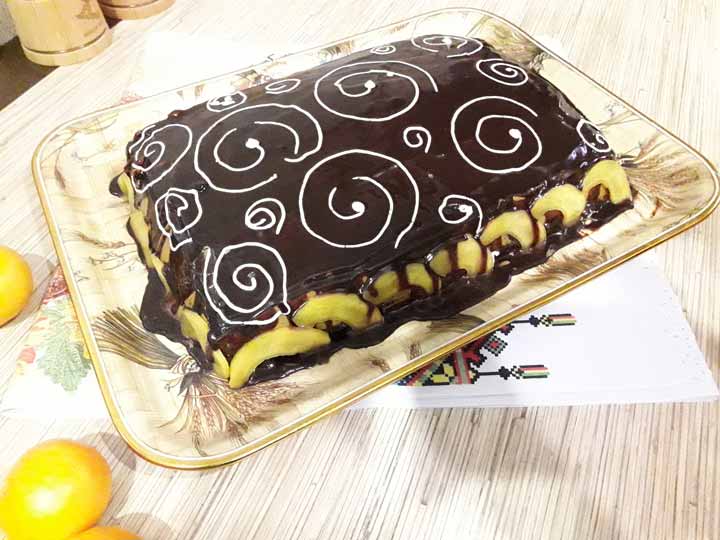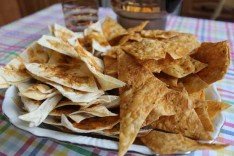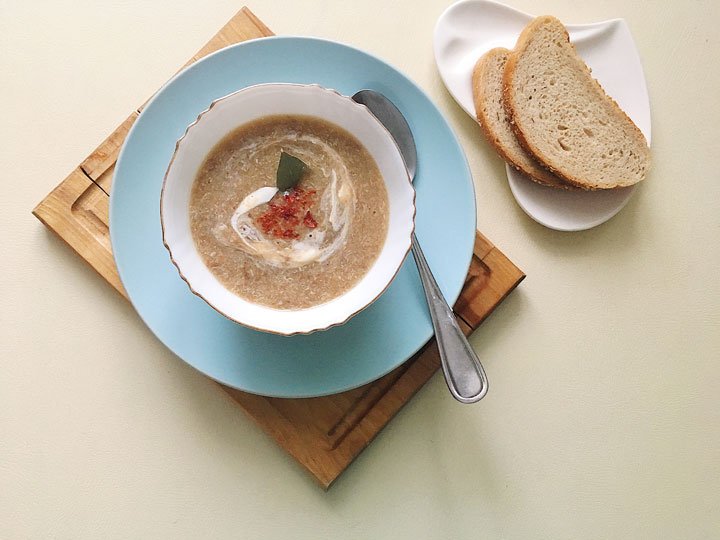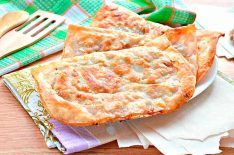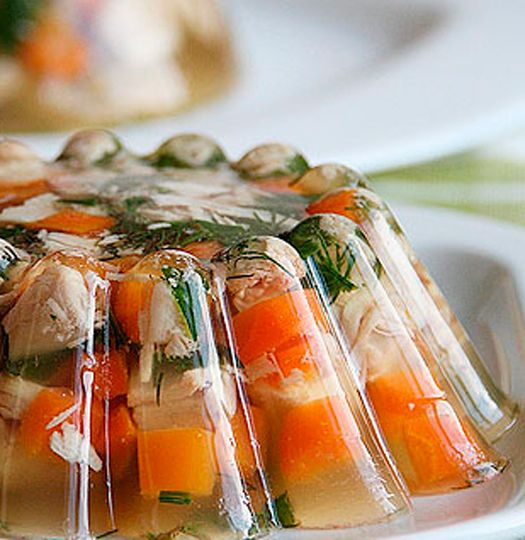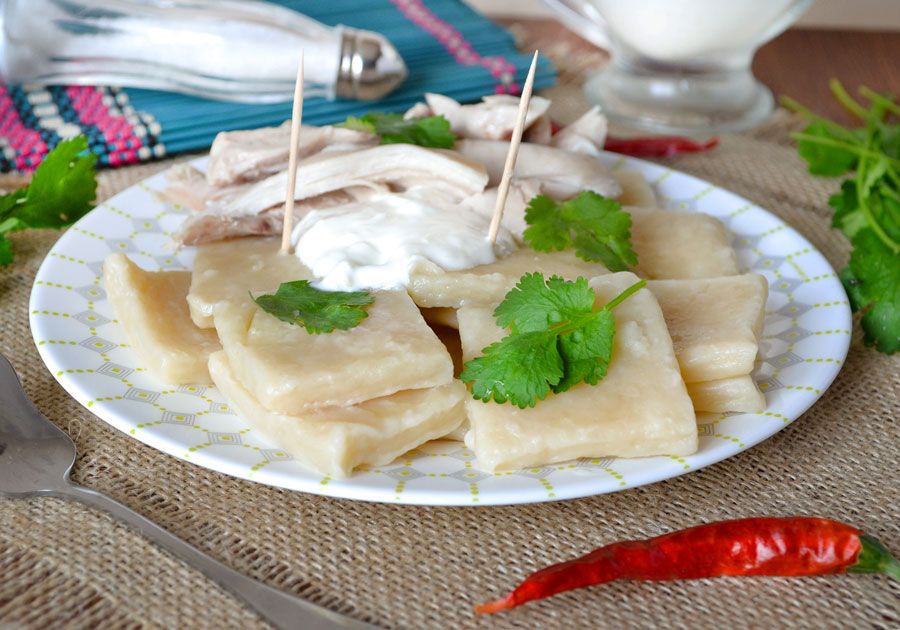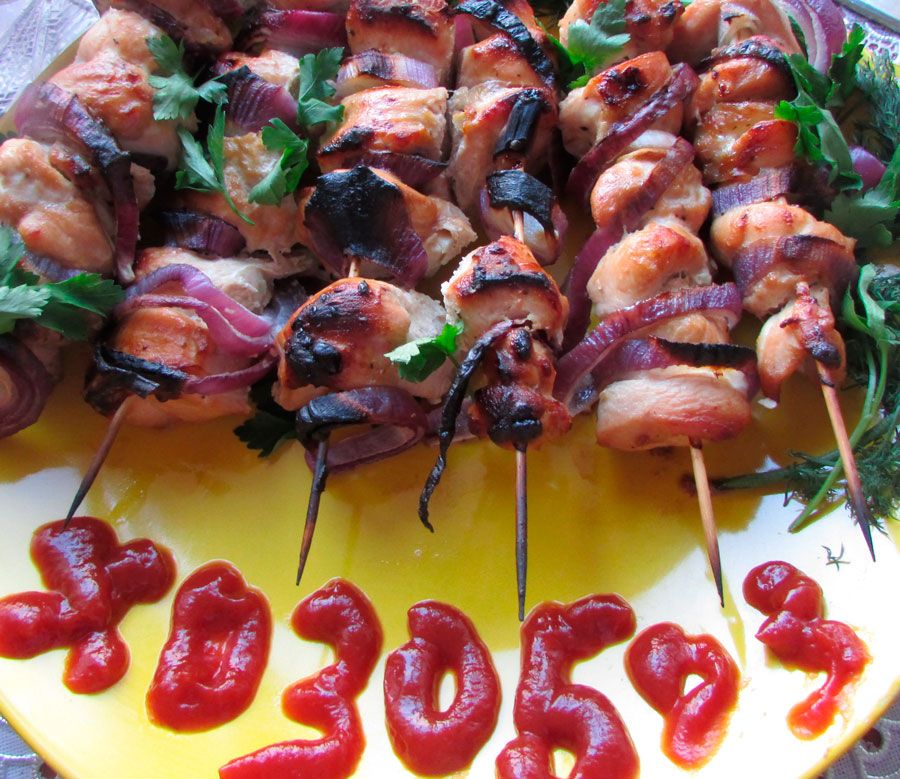Banitsa
- Nutrition Facts
- Calories: 250
- Protein: 8
- Fats: 11
- Carbohydrates: 28
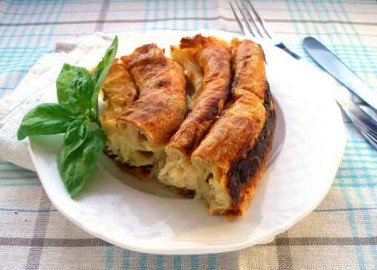
If you were lucky enough to visit sunny Bulgaria at least once, you probably tried banitsa there - the famous national dish. How delicious it is! Delicate dough, juicy filling - you can take such a dish to the beach with you, and it will look great on the festive table. That is, hozOboz sees no reason not to cook this amazing Bulgarian dish. We note right away that the cooking process itself takes a lot of time, but do not rush to give in to this recipe - in general, it is not complicated. The main thing is to follow our advice and everything will work out for you!
Banitsa is a traditional Bulgarian puff pastry dish. It is usually prepared with cottage cheese or cheese fillings, but options with vegetables, minced meat, and fruits are acceptable. Banitsa, the recipe of which is on our agenda today, has been an indispensable element of Bulgarian cultural rites and traditions, festive feasts for Easter, Christmas, New Year since ancient times. You can try the Bulgarian banitsa pie in street fast food establishments, which tourists everywhere use and buy banitsa with pleasure on the way to the beach.
The history of the banner
The history of this wonderful dish dates back several centuries. Banitsa already in the X-XI centuries was quite a familiar part of the festive feasts. There is written information that banitsa was in the traditional diet of the Bulgarians from Pirin Macedonia. This dish symbolized in the original sense a rural idyll, and was also a structural element of the world order: the sky was symbolized by a baking dish, and the earth was a flat cake like rolled out dough. According to legend, when God planned to cover the Earth with the sky, it turned out that it did not fit under the cover. Then the Creator crushed it, and the Earth (read flat cake) was covered with folds, like a banitsa pie. This is how the ancient Bulgarians imagined the formation of plains and mountains.
Ingredients:
For test:
- Wheat flour - 500 grams;
- Vegetable oil (sunflower) - 2 tablespoons (and a little more to grease the dough);
- Vinegar - 2 tablespoons;
- Egg - 1 piece;
- Salt - 1 teaspoon;
- Warm water - 200 ml
Filling:
- Cottage cheese - 200 grams;
- Eggs - 2 pieces;
- Sour cream - 60 ml;
- Soda - 1/4 teaspoon;
- Salt - to taste;
- Ground black pepper - to taste;
- Butter - 50 grams.
Cooking
- We start preparing our banitsa. The flour must be sifted, we do it directly into the bowl of the food processor.
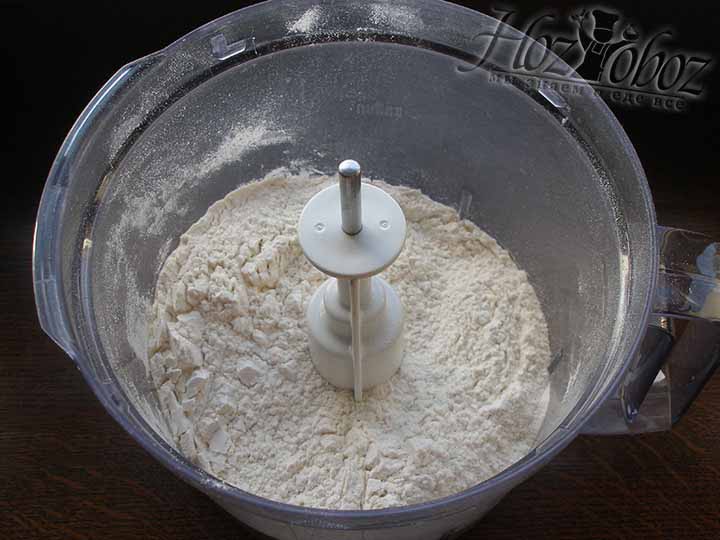
Put the flour into the bowl of the food processor.
- Then add the egg to the flour.
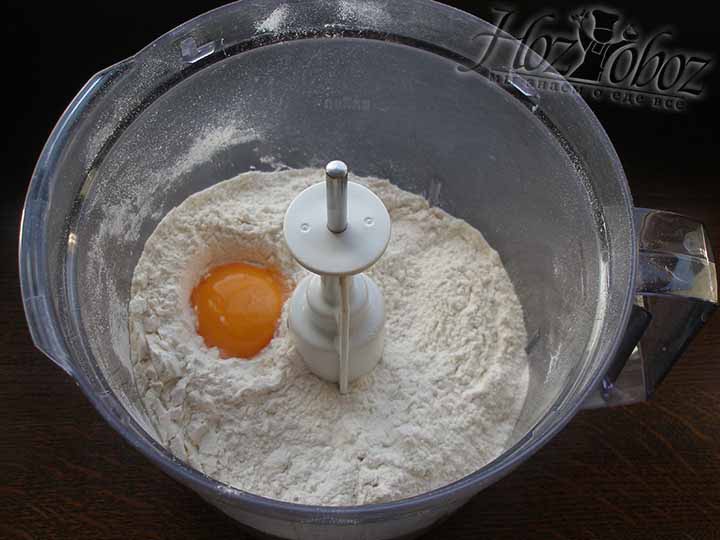
We send the egg there.
- It's time to add salt.

Adding salt.
- Now pour vinegar into the bowl. We use white wine vinegar, but apple cider vinegar can be substituted. Ordinary vinegar is also suitable, but if it is possible to use wine or apple cider vinegar when preparing banitsa, give preference to them.
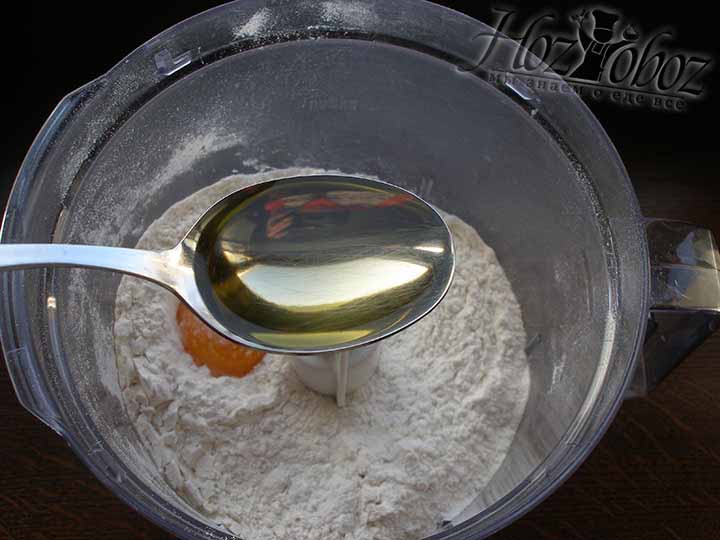
Pour in the vinegar.
- Next, add vegetable oil. You can use sunflower or olive oil.
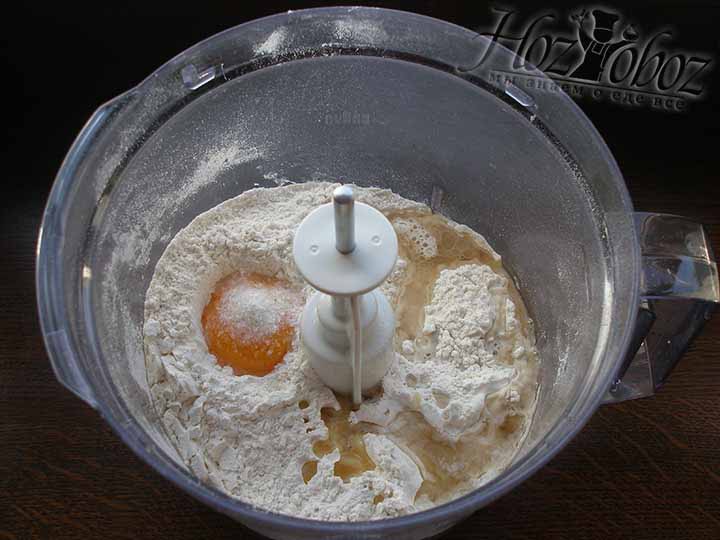
Pour in vegetable oil.
- Finally add water.
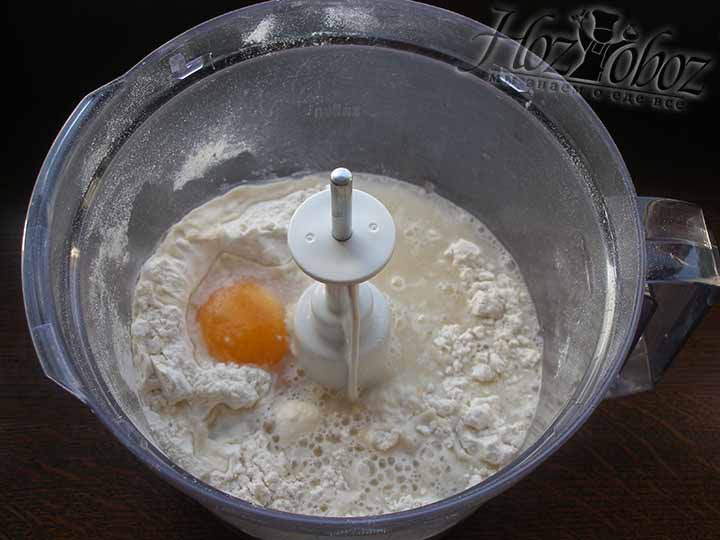
Adding water.
- We start kneading the dough. If necessary, add a little water or flour.
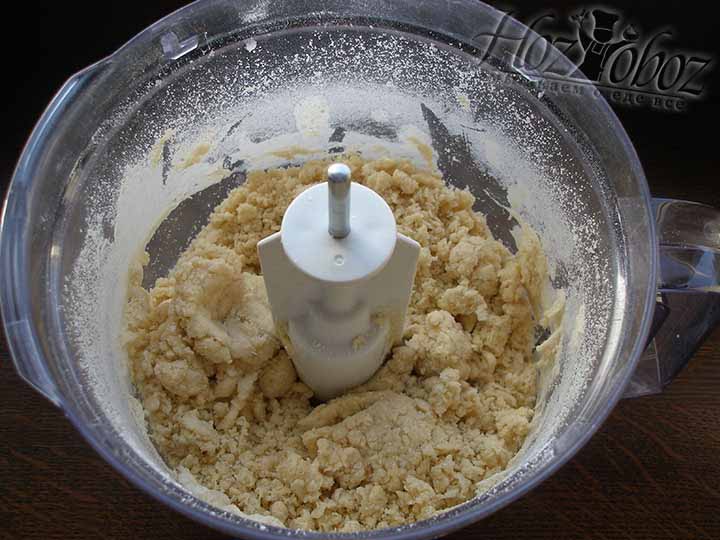
Kneading the dough.
- We look for the dough to be soft and pliable, but in no case steep. And it shouldn't stick to your hands!

The dough should be plastic and "obedient".
- Put the dough on a work surface sprinkled with flour.
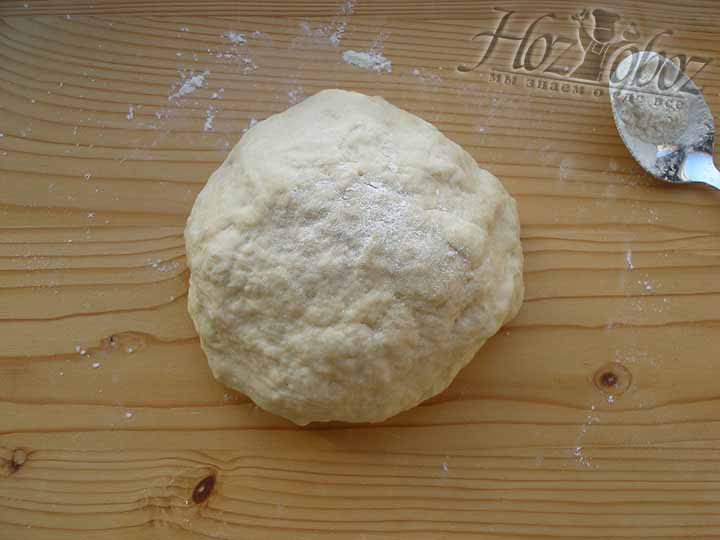
The dough is ready for further manipulations.
- Now we need to divide the dough into 8 equal pieces.
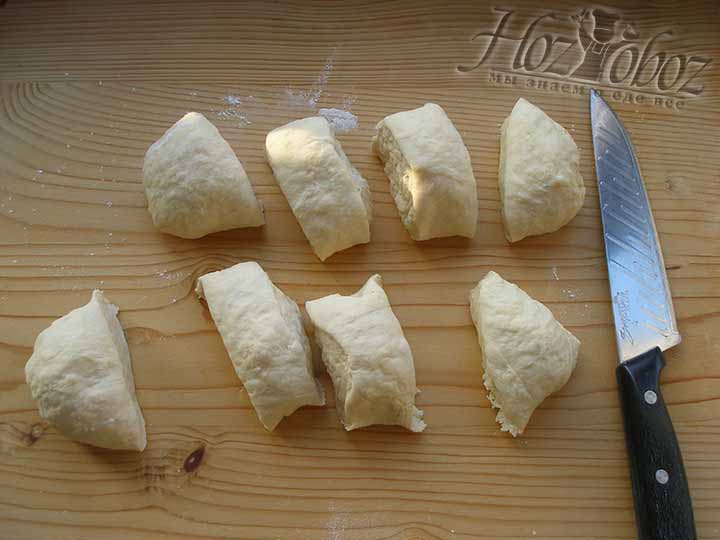
Divide the dough into 8 equal parts.
- We sculpt balls from the resulting pieces. Lubricate them with vegetable oil.
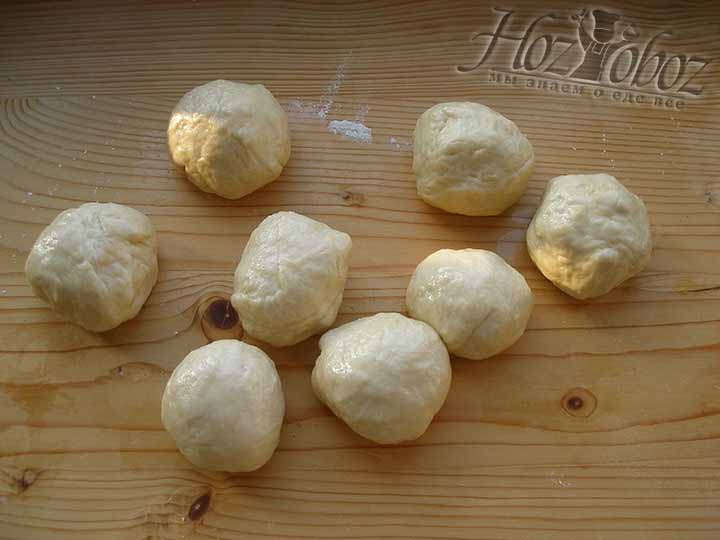
We form balls from the dough and grease with oil.
- Put half of the balls (we get 4) on a plate.

Put 4 balls on a plate.
- On top of these balls we place their remaining "brothers", we press them against each other.

We put other balls on the balls and press them with our fingers.
- Now, from every two balls pressed against each other, we form one ball. As a result, they get 4. We cover the balls with cling film and send them to the refrigerator for 8-10 hours.
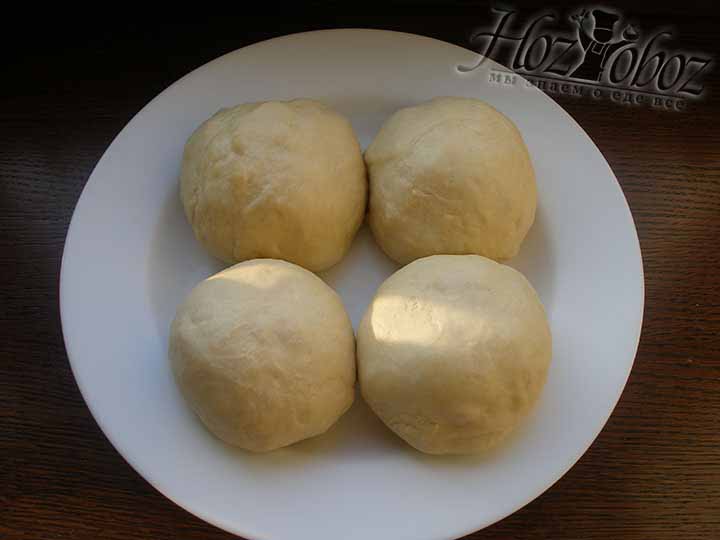
We form larger balls from the dough and send it to the refrigerator, for example, overnight.
- We proceed to the next step when the dough has been in the refrigerator for at least 8 hours. So let's get the stuffing ready. Cottage cheese or brynza rub with a fork. Banitsa, the cooking photo of which you are now studying, should turn out to be very tasty.

Starting to prepare the filling.
- Add eggs to the curd.
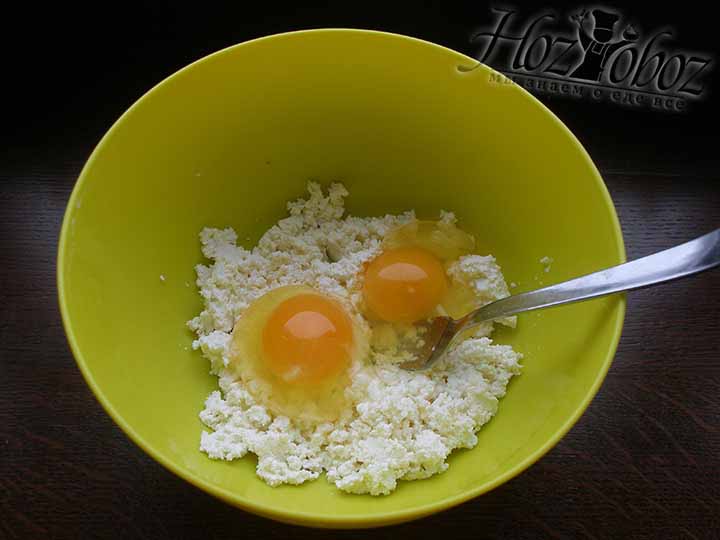
Adding eggs.
- Salt and pepper the ingredients for the filling.
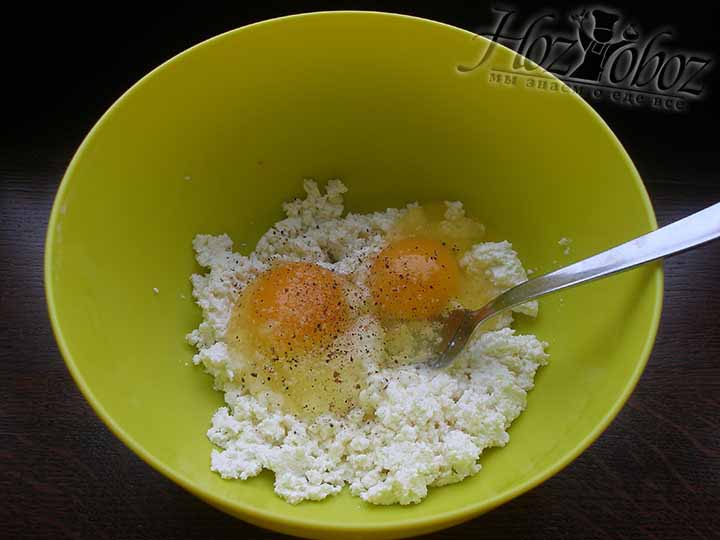
Salt and pepper the filling.
- Then add natural yogurt or sour cream to the filling.
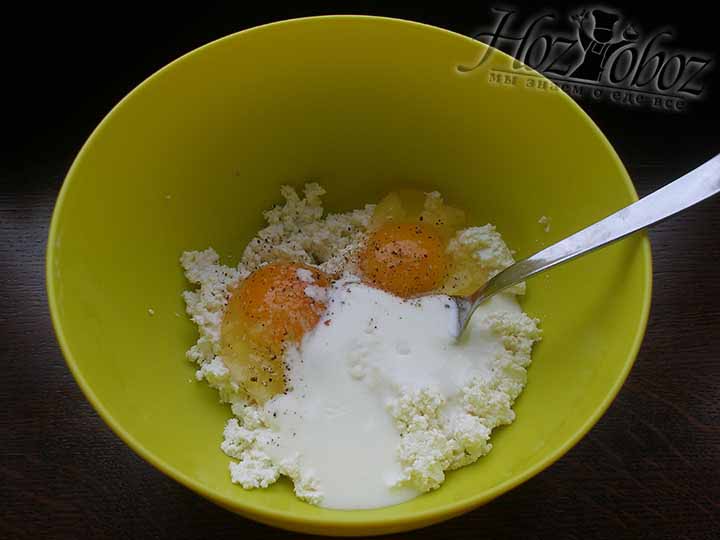
Add sour cream or yogurt.
- Mix all the ingredients for the filling. If desired, you can add spinach, basil, dill or parsley to it, but only fresh ones.

The filling is ready.
- Finally, we take out our pieces of dough one by one from the refrigerator.
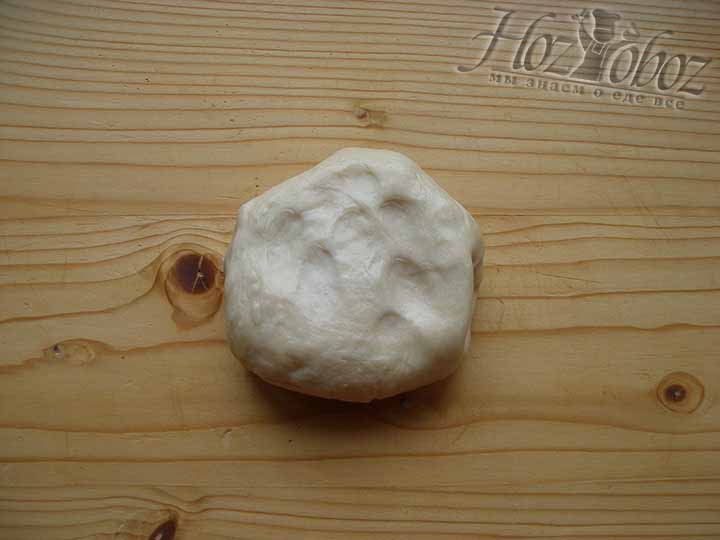
Preparing the dough for rolling.
- Roll out each piece of dough very thinly, but make sure that the dough does not tear. In general, the dough turns out to be very plastic, it stretches perfectly, it should not tear.
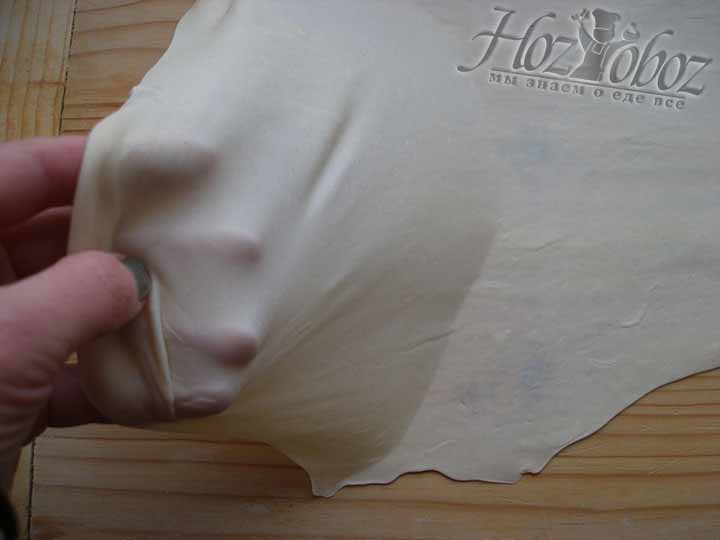
Roll out the dough thinly.
- Apply filling evenly to each layer of dough.

Spread the filling on the dough.
- Then carefully begin to roll the dough into a roll.

Folding the dough.
- Grease the baking dish with butter. We turn the first roll with a “snail” and put it in the center of the form.
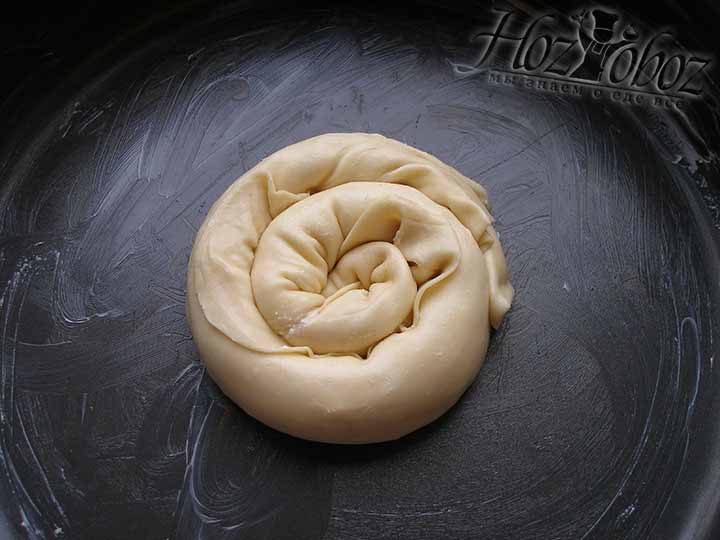
We form a banitsa from the center.
- Do the same manipulations with the remaining dough and stuffing. We spread the finished rolls around, as seen in the photo, until the entire form is filled with them.
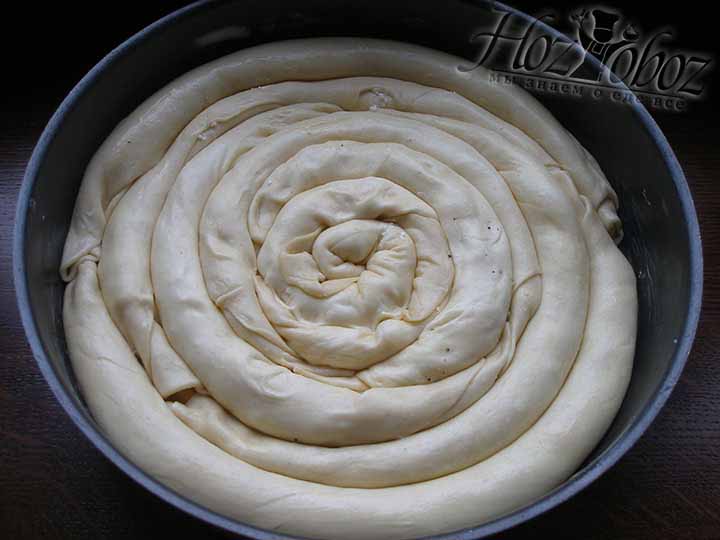
We twist the banitsa, as shown in the photo.
- Melt the butter and grease the surface of the banitsa with it.
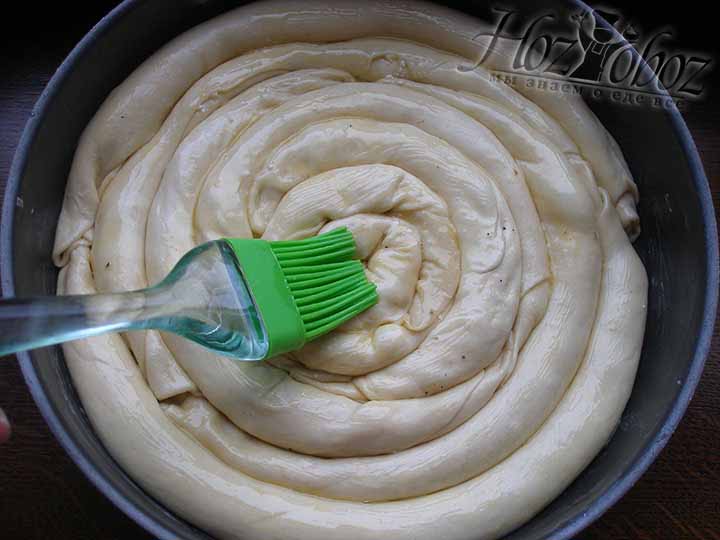
Lubricate the banitsa with melted butter.
- Now we grease the entire surface of the banitsa with sour cream or natural yogurt.

Lubricate the surface of the pie with yogurt or sour cream.
- We bake the banitsa in an oven preheated to 200C for the first 25 minutes, then reduce the temperature to 180C, and if the banitsa is too browned, cover it with parchment or foil and leave it in the oven for another 20 minutes. Perhaps someone will need less time, and someone more - all ovens, we remind you, are different, like people.

Our banitsa turned out ruddy and appetizing.
- The Bulgarian banitsa is ready, you can start the meal. It is both warm and delicious when chilled.

Bon appetit!
Benefit
The benefit of banitsa is that its filling is brynza, cottage cheese or cheese, and these are very healthy products. And the filling can also be improved by adding greens to it - spinach, parsley, basil, dill. In general, you yourself can decide how useful your ban will be. Well, here our Bulgarian banitsa is ready, the recipe of which is not to say that it is very complicated, but not the easiest either. Trust me, this dish is worth the effort! By the way, there is another option - lavash banitsa, this is a simpler recipe, but, of course, it is better to cook a national Bulgarian dish with homemade dough.




